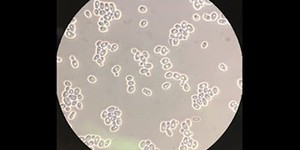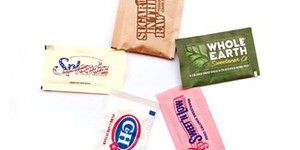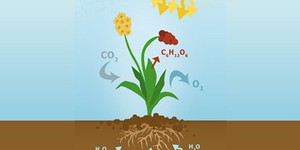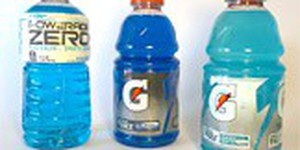Others Like “Effects of Exercise: Changes in Carbon Dioxide Output” (top 20 results)
|
Our metabolism changes as we get older, a sad fact of life that we cannot change. Old age affects our bodies in many ways. Changes in musculature, bone strength, energy, diet and breathing are some of the many ways we change as we age. You might notice that people often get out of breath when they are older and doing a physical activity. Why do some people feel out of breath, while others do not? Does this change correlate with age? Could this reflect a difference in lung capacity between…
Read more
This is a straightforward project on glucose metabolism in yeast. You will grow yeast under aerobic and anaerobic conditions and measure carbon dioxide output to assess metabolic efficiency.
Read more
There is nothing quite like the smell of fresh-baked bread to make your mouth water! As any baker can tell you, you cannot bake bread without yeast. Yeast actually eat sugar so that they can reproduce and make more yeast, and make bread dough rise. But can they use sugar substitutes to do this? In this science project you will get to investigate how well yeast grow with sugar substitutes as a food source. Pass the butter, please!
Read more
Have you ever seen a (non-carnivorous) plant eat? Probably not! Plants do not get the energy they need from food, but from the sunlight! In a process called photosynthesis, plants convert light energy, water, and carbon dioxide into oxygen and sugar. They can then use the sugar as an energy source to fuel their growth. Scientists have found an easy way to measure the rate of photosynthesis in plants. The procedure is called the floating leaf disk assay. In this plant biology project, you can…
Read more
When you're chasing after your dog, do you ever stop and say, "Wait, I have to catch my breath!"? Do you think that there are times when your dog feels like that, too? Does your dog's respiration rate change when you two are playing active games together? Try this playful science project to find out!
Read more
The ingredients in Alka-Seltzer® tablets undergo a chemical reaction that produces carbon dioxide gas as soon as the tablets hit water. Do you think you can cause the tablets to produce gas faster by breaking them into smaller pieces before dropping them in water? Find out for yourself with this project.
Read more
This is a straightforward, fun project to measure the rate of the chemical reaction that occurs when Alka-Seltzer® tablets are plopped into water. You will track the volume of carbon dioxide gas produced at regular intervals after the reaction begins. How does changing the temperature of the water affect the production of gas?
Read more
The oceans are a precious natural resource, part of Earth's carbon cycle. But what happens if the oceans absorb too much carbon dioxide? Many scientists are concerned that the increased absorption of carbon dioxide is causing them to become more acidic. What impact does that have on the marine life? In this ocean science fair project, you will demonstrate ocean acidification and investigate the effect on the shells of marine life.
Read more
Have you ever wondered how antibiotics and other medicines are able to stop dangerous infections? How do such medications kill microorganisms without in general harming the person the microorganisms are infecting? Because many different types of microorganisms can infect us, we have had to develop an amazing number of ways to deal with these harmful microbes. Fungal infections can be particularly dangerous, but we have developed many different antifungal medications that can usually deal with…
Read more
Do you read the list of ingredients in foods and drinks before you buy them at the grocery store? If you do, you may have noticed that many of the items, especially colored drinks, contain dyes with names such as FD&C Blue 1, Red 40, or Yellow 5. But how much dye is needed to create all these colors? In this chemistry science project, you will build a simple spectrophotometer that is able to measure the concentration of colored chemicals in solutions. You will test your device by measuring…
Read more
|
Explore Our Science Videos
How Far Can a Sneeze Go?
Change the Reaction Rate of a Foaming Reaction
Delayed Release Pill Challenge












